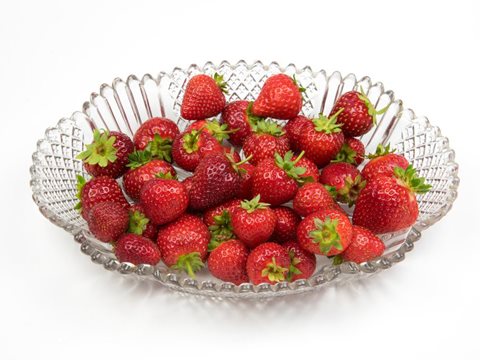Wimbledon and the strawberry – a very British affair
Our love affair with strawberries is a very British one, and yet the garden strawberry we know and love has hopped an ocean and the breadth of America to get here
Strawberries have been a popular fruit since the days of Henry VIII, when in 1509 his advisor Thomas Wolsey is said to have introduced strawberries and cream as a dessert. Their popularity soared in 19th century London when, for a few heady weeks of the summer, the juicy berries were sought after by the wealthy. Before the days of refrigeration, eating berries in public was a sign of prosperity. Their ripeness period coincided with the tennis tournament, and so the relationship between strawberries and Wimbledon began.
Wimbledon fun facts
- Each year more than 38.4 tons of strawberries (1.92 million fruits) are picked and consumed during the tournament. That’s more than 140,000 punnets.
- Strawberries and cream are said to have been served at Wimbledon since the first tournament in 1877 – when there were just 200 people in attendance.
Wimbledon strawberry grower
Hugh Lowe Farms have been supplying berries for the event for over 25 years. The family business started in 1893 when Bernard Champion arrived in Mereworth, 31 miles away from Wimbledon, with an ambition to become a leading fruit grower. Wild strawberries flourished in the local woods, so he decided to trial his first cultivated crop. Marion Regan now leads the firm, which farms approximately 500 hectares and is one of the largest soft fruit growers in the UK.The world-famous fruit is hand-picked and delivered each morning of The Championships, the berries timed to ripe perfection so as to be enjoyed at their best during the two weeks of Wimbledon. Skilled pickers start work at dawn every day, hand-selecting every berry to make sure it’s good enough to go in a Wimbledon tray.
For the love of strawberries
-
The strawberry was once symbolic of Venus, the Roman goddess of love, because of its heart shape, deep red colour and purported aphrodisiac qualities.
-
In Medieval France, newlyweds were served a soup made from strawberries, sour cream, borage and sugar at their wedding feast, to bless their union with sweetness, fertility and love.
-
Legend suggests that if a double strawberry is split in half and shared between two people, they will fall in love.
RHS Chief Horticulturist Guy Barter on the strawberry and its production
- Strawberries are members of the rose family – Rosaceae – just like apples, pears and plums.
- Strawberries are herbaceous
perennials - They don’t get their name from the straw
mulch - The little pips on the outside of the strawberry fruit are seeds. If you let a ripe berry go to mush, the seeds can be spread on a piece of kitchen paper towel, allowed to dry and then sown.
- Strawberries are disastrously disease susceptible and last only four years in the garden, so in year three, fresh, certified disease-free plants that are bred for disease resistance are planted on a new site. 30 plants is enough for a good supply. Ideally, day-neutral strawberries should be replanted every year.
There are four kinds of garden strawberry:
- Alpine strawberries – tiny fruits, essentially cultivated wild strawberries, minuscule but tasty yields – fun groundcover.
- June bearers – these flower in a rush in June/July and then produce masses of runners (sprawling, spreading shoots) and no flowers in response to long summer days, initiating their flowers for the following year at this time.
- Everbearers or perpetuals – these flower in early summer and again in late summer and autumn – they are less affected by long days. They form clumps rather than runners.
- Day-neutral strawberries – essentially, improved everbearers that flower steadily all summer into autumn – it is these that make it possible to grow strawberries in Britain in late summer and autumn, or even winter in heated greenhouses.


